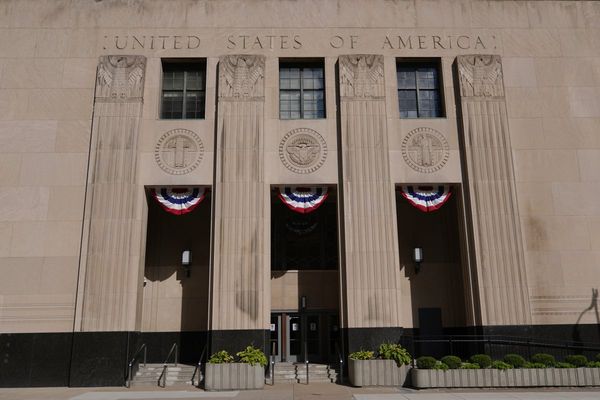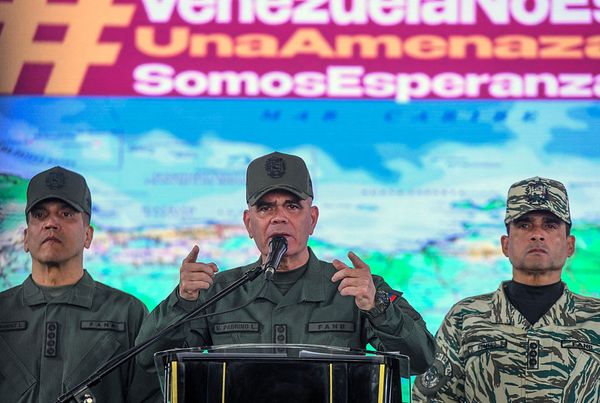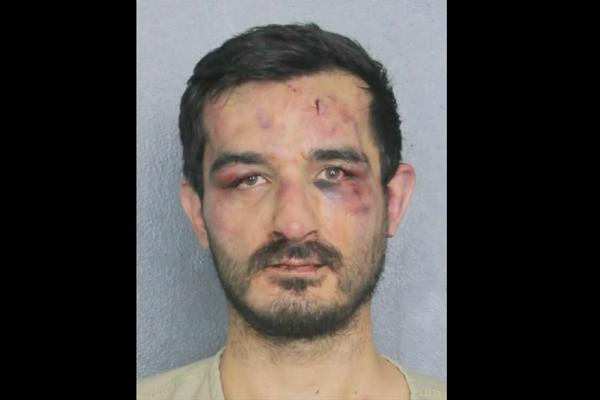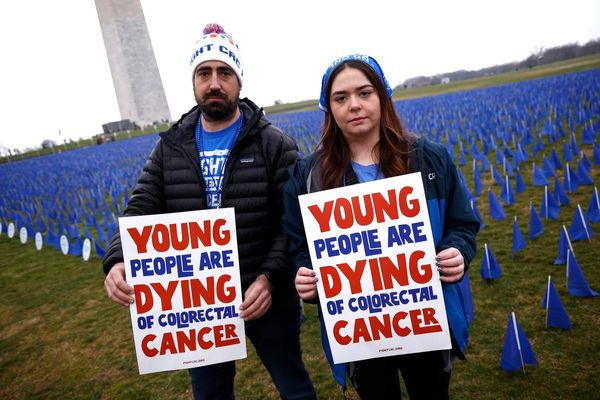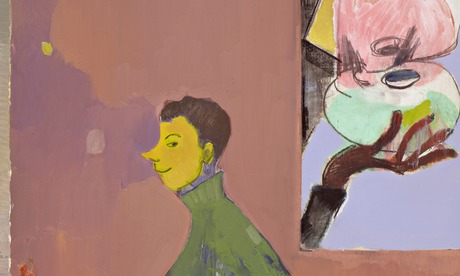
Sanya Kantarovsky, London
The Moscow-born painter Sanya Kantarovsky’s elegant canvases are populated by sinuous figures, recalling old-fashioned illustration and cartoons in gorgeous, muted colours. This show takes its cue from Bulgakov’s novel The Master And Margarita, or rather from a dance interpretation conceived with the performance artist Ieva Misevičiūtė. Paintings allude to the book’s classic moments – a witchy Margarita flying nude to Satan’s ball, her curling toes echoing her billowing black hair, or Behemoth the giant cat socialising with Moscow’s elite. Kantarovsky creates an increasingly unstable pictorial realm where images slide around as the outlines of figures and faces are layered one on top of the other. Taking further inspiration from the Ballet Russes’s stage design, these large-scale works form a set around a giant cat’s tail that doubles as a catwalk-cum-stage to house Misevičiūtė’s performances.
Studio Voltaire, SW4, Thu to 7 Jun
SS
Li Bunyan, Manchester
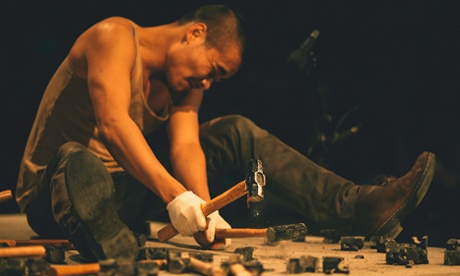
A young man sits on a busy city pavement next to a pile of hammers and commences to systematically smash up the metal head of one with the metal head of another. You quickly get the joke about absurdist frustration and maybe pick up on a metaphor for the futility of the work ethic in a utilitarian system. However, as the video progresses, sheer effort builds a sense of theatrical pathos. The man is Li Binyuan, an artist who goes in for disturbing the peace – and disrupting social and political constraints – around Beijing. Notoriety first followed his naked dashes across the nighttime city carrying a crucifix or a sex doll. Binyuan might be a self-parodying hero, but he’s all the more popular for it.
Centre For Chinese Contemporary Art, to 31 May
RC
Xavier Ribas, Liverpool
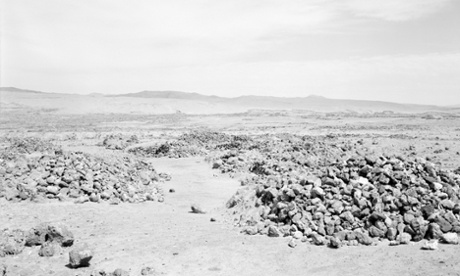
A study of Chilean nitrate mining hardly sounds like an exciting subject, but Xavier Ribas’s installation has more in common with the magic realist novels of Gabriel García Márquez than it does with matter-of-fact photo-documentary. The basic history is established from the outset: the element nitrogen comprises around 80% of the Earth’s atmosphere. Chilean sodium nitrate is used to produce both fertiliser and explosives. British colonial powers heavily exploited its extraction in the late 19th and early 20th centuries. From such dry references, Ribas weaves a multiple-image photo-mosaic ranging from the Atacama desert to the mansions of London financiers. There’s also a line of glass-plate photographs of Mars taken on an Andes expedition, and a display of Chilean tobacco pouches.
The Bluecoat, Sat to 5 Jul
RC
Carol Bove, London
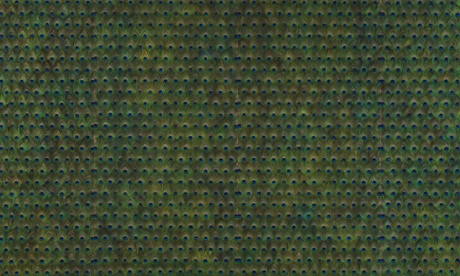
Carol Bove’s fusion of minimalism and nature has won her many fans in the US, and her first London solo show has all the hard industrial materials and weathered natural forms for which she is known. These include a rusting steel column paired with faded, gnarled driftwood, and a silver curtain that shimmers with a triangular pattern made from thousands of beads. Bove frequently signals her interest in questions of interpretation: one sculpture references Argus, the giant whose 100 eyes Hera used to decorate the peacock’s tail, while four large canvases are lavishly covered with feathers.
David Zwirner, Tue to 30 May
SS
The Curves Of The Needle, Newcastle upon Tyne
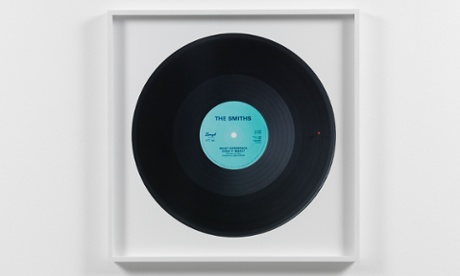
With an exhibition title taken from Nadelkurven, a 1927 Theodor Adorno essay pondering the transformative influence of the then-new technology of phonographic recordings, this show corresponds with an unexpected revival in the popularity of vinyl. This has seen every aspiring disco dude rummaging in their local charity shop for the LPs they long ago donated. Contemporary artists have always had a perverse penchant for seemingly obsolete technologies, as installations here by the likes of 2012 Turner prize winner Elizabeth Price and improvised music maestro David Toop will testify. A highlight will be Christian Marclay’s 32-minute video Looking For Love, which shows the artist tirelessly dropping a stylus on pop records in the blind hope of landing on the love word. Stealing the show, however, will likely be a choice collection of thoroughly spooky Soviet-era bootlegs cut from used x-ray plates.
BALTIC 39, to 17 May
RC
Kathy Prendergast, Cork
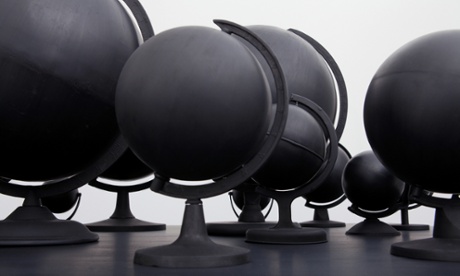
Kathy Prendergast makes art out of things that bear the wear and tear of human usage: old maps; jam jars; a moth-eaten pair of mittens. One memorable piece involved her erasing every town and city name on a map of North America except those featuring the word “lost”. Here, a 20 metre-long new assemblage includes a row of faceless white clocks and a grouping of black atlas globes, as territorial aspects are touched upon once more against a pitch black backdrop redolent of a midnight sky. Elsewhere, empty bell jars are piled up, one enveloping the other like so many Russian matryoshka dolls. An enigmatic melancholy endures throughout as her installations evoke the accumulating richness of experience, and sometimes its tragic wastage.
Crawford Art Gallery, to 13 Jun
RC
Sonia Delaunay, London
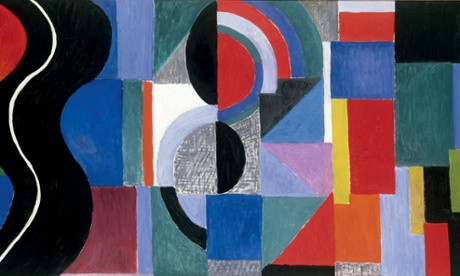
Sonia Delaunay was one of the 20th century’s premier modern women. An avant-garde designer and businesswoman as well as an artist, her place in the modernist canon is less entrenched than her husband Robert’s – an oversight this Tate survey seeks to right. Soaking up the 1910s Paris art scene’s innovations, she fused orphism – the art of sensory colour pioneered by herself, Robert and the poet Apollinaire – with the folk traditions of her native Ukraine. Initially as likely to work in patchwork or illustration as painting proper, fashion became her major creative outlet through her Atelier Simultané, and her rhythmical patterns graced everything from swimsuits to umbrellas. Though she returned to painting later in life, it was this expanded abstraction that could be lived in 3D that was her most radical achievement.
Tate Modern, SE1, Wed to 9 Aug
SS

